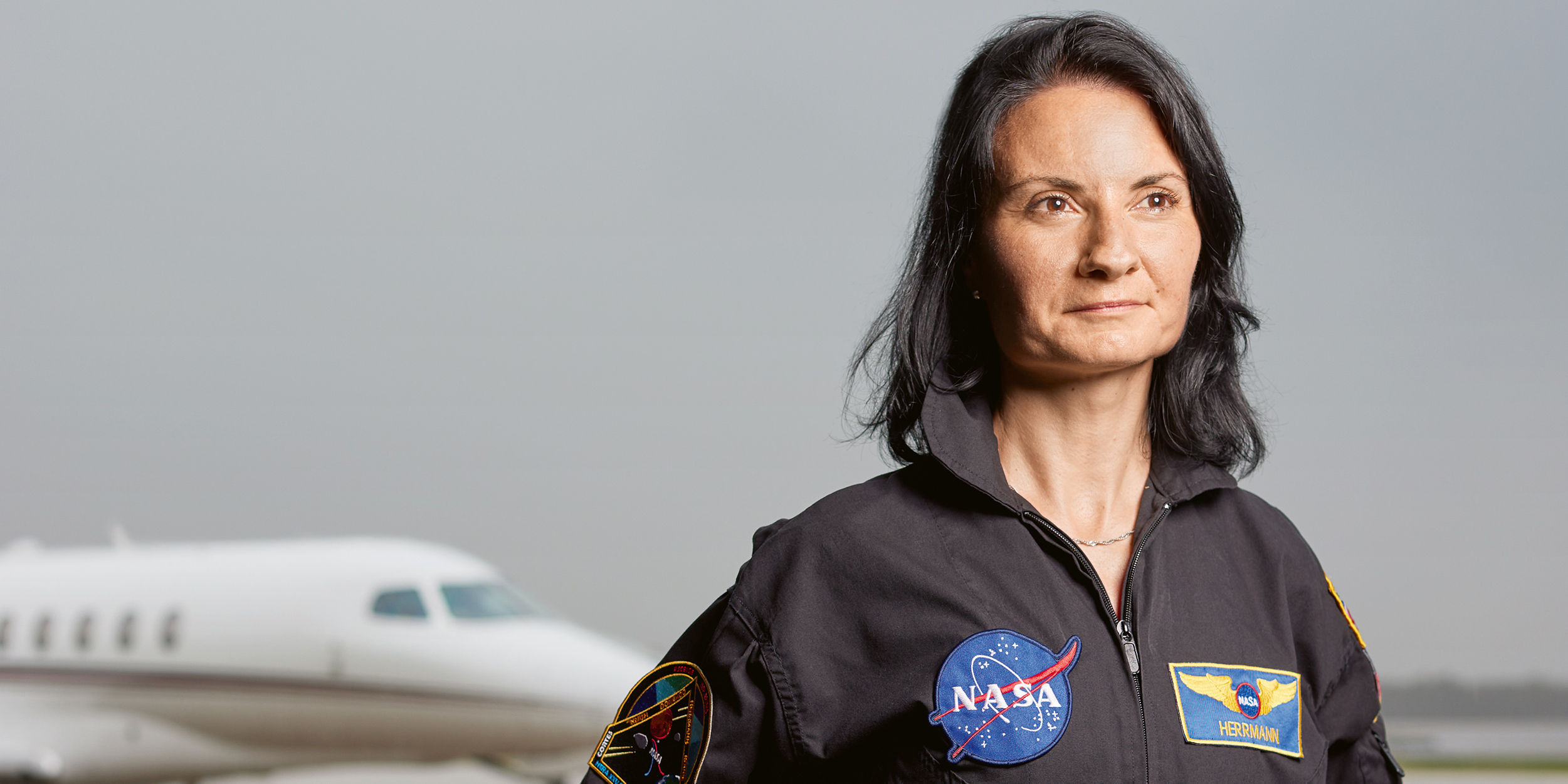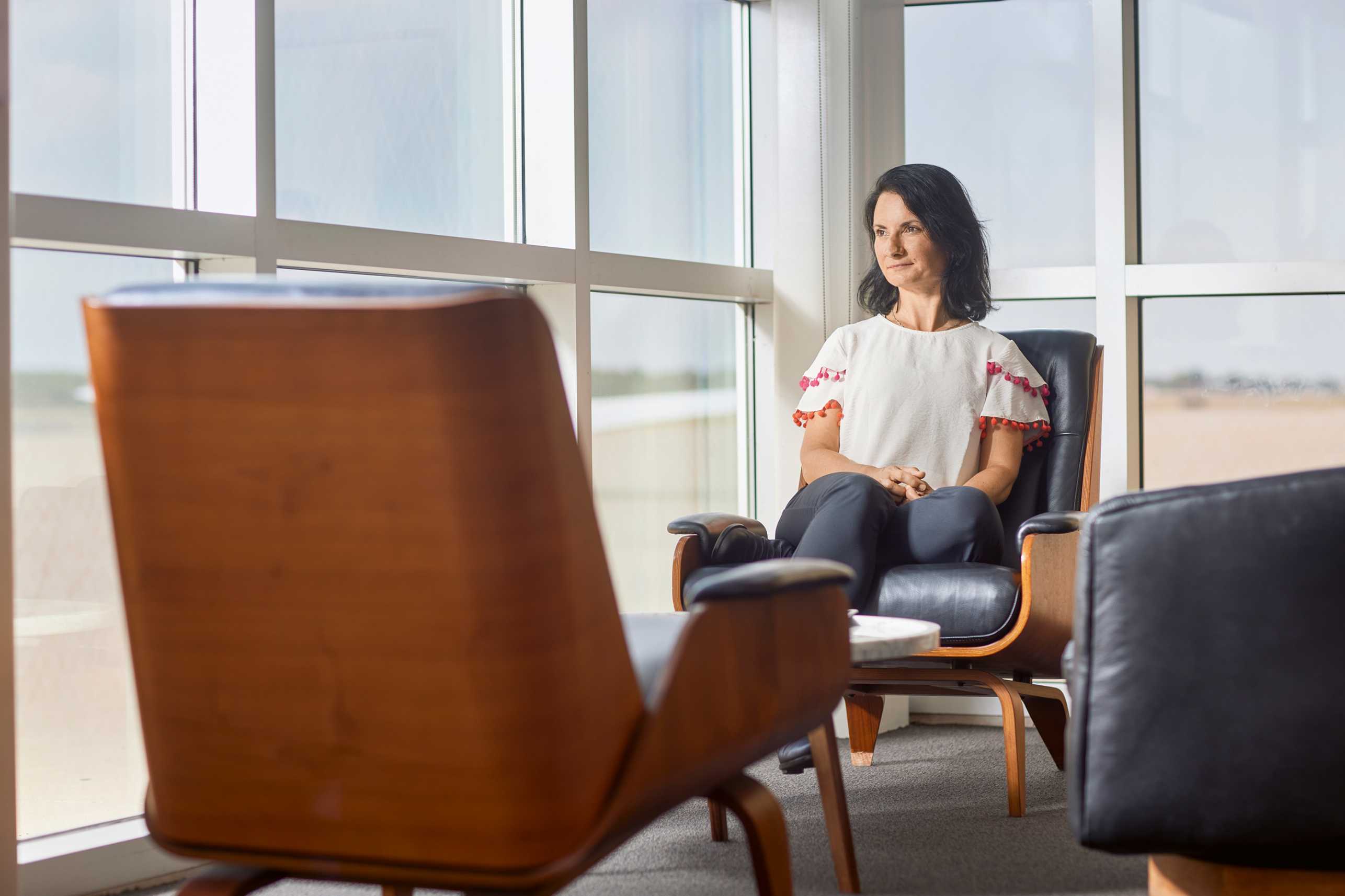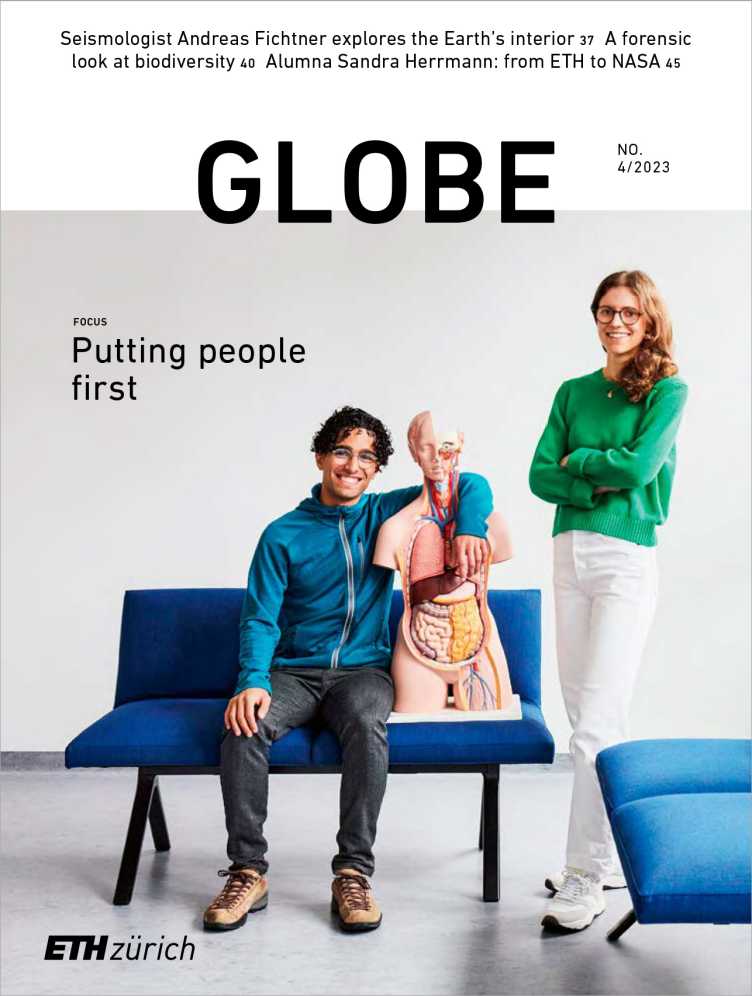Modern adventurer
Whether on research vessels or testing her limits as an analog astronaut and pilot, alumna Sandra Herrmann has an irrepressible appetite for adventure, fuelled in part by her experiences at ETH Zurich.

“I hope nothing happens to my family while I’m gone,” thought Sandra Herrmann as she climbed the five steps of the aluminium staircase leading to the NASA space capsule. She would be sharing this cramped space with three other people for 45 days – her only contact to the outside world the voices of mission control and a weekly phone call or email from home. This was the ETH alumna’s first experience as an analog astronaut: from January to March 2023, she led the same day-to-day life as if on board the ISS, but confined within a space capsule at NASA’s Johnson Space Center in Houston, Texas. Such simulations give scientists new insights into how to streamline procedures and tackle challenges and group dynamics on space missions. “I wanted to test my own limits while helping to advance scientific knowledge,” Herrmann says.
ETH encourages openness
Embracing new experiences to expand one’s horizons – it’s a motto that applies to many of the activities undertaken by this intrepid alumna, who also enjoys piloting aircraft in her spare time. She attributes some of her adventurous spirit to her time at ETH Zurich. “My doctoral studies at ETH inspired me to seek out new experiences and boost my personal development,” she says. When Herrmann came to Zurich in 2006, having completed her Master’s in geology and palaeontology, it was the first time she had ever lived outside Germany. When she joined Hans Thierstein’s research group at the Department of Earth Sciences, she quickly learned the value of broadening her horizons. “Our group was incredibly diverse: we came from different cultures and had very different outlooks and hobbies. That really whetted my appetite for that kind of environment,” she says. Immersing herself in the plentiful opportunities offered by ETH, she was fascinated by the international vibe and inspired by what she describes as the crème de la crème of science. “The time I spent at ETH just blew me away!” she says.
“I wanted to test my own limits while helping to advance scientific knowledge.”Sandra Herrmann
All hands on deck
Much of what she learned at ETH continues to be useful today. As part of her job with the International Ocean Discovery Program (IODP), which collects and analyses core samples from the ocean floor, she spends up to six months a year on the high seas with a diverse group of scientists. “The capacity to keep an open mind and be respectful of each other is essential on these missions; it’s the only way to get things done as a team,” says Herrmann. She is in charge of running one of the labs on the vessel and familiarising researchers with the instruments on board. Having the chance to work with the sediment samples is something that never ceases to amaze her. “These cores contain visible evidence of when the dinosaurs became extinct. Holding something like that in your hands is just incredible,” she says.
Expeditions normally last 60 days, plus several days of preparation and follow-up in port. Once the research trip gets underway, the crew of some 120 people rarely sees land and is engrossed in the 24-hour-a-day schedule that operates on board. “Initially, the new group of scientists are pretty confused and nobody really knows what they’re supposed to be doing. But by the start of the second week, everyone’s got their bearings. It all starts running like clockwork, and two months in, we’re like one big family,” says Herrmann. Even so, the cramped quarters and strict routines can sometimes be difficult to cope with. “Week six is often particularly tough. The excitement has faded, and people are tired and starting to get homesick,” she says. That’s when the family bonds forged by the team really kick in, with people grabbing a coffee and chatting about their loved ones back home whenever there’s a pause in the drilling.
Life on the edge
Herrmann is particularly fascinated by these kinds of group processes and how they can be successfully navigated on a mission. Previous voyages have taught her to be sensitive to the changes in mood of those around her and to respond accordingly. “My experiences at sea also came in useful in the NASA capsule,” she says. “When the group started to get homesick, I delved into my bag of tricks and pulled out a dance party!”

The parallels to life on board a research vessel made it easy for Herrmann to deal with her first mission as an analog astronaut in the Hera capsule. But she was also quick to notice the differences – for example, in her surroundings. On the research vessel, Herrmann often spends quieter moments staring at the sky and enjoying the sweeping views to the horizon. In the cramped space capsule, monitors were used to simulate a view of outer space. “You can’t see trees, grass or water; there’s no birdsong, no sounds of anything around you, and none of the familiar smells of nature,” says Herrmann. “It really felt like I was in space.” It was these sensations that she found herself looking forward to most, once the 45-day mission was over. “All I wanted to do was lie in the grass, look at the sky and enjoy the fresh scent of the soil,” she says.
The next adventure beckons
It’s only when Herrmann returns from a voyage that she settles into some kind of routine: until September 2023, she was based at the IODP headquarters in College Station, Texas, as part of a team developing software for the scientific characterisation and evaluation of core samples. “It was like having a 9-to-5 job. I went for my run at noon, and after work I had a coffee with my husband before we wheeled the plane out of the hangar,” she says. She recently obtained her commercial pilot’s licence and is now working on adding the multi-engine rating to her certificate. But she’s still unsure if she would like to become an airline pilot or try out aerobatics. “It’s not like I plan these kinds of things. I’m simply open to trying new things, and I say yes to whatever fascinates and inspires me the most,” she says. The most important thing is that the projects she takes on are compatible with her family commitments to her American husband and her parents in Germany.
Herrmann’s latest adventure has taken her to San Diego. In October 2023, she took up her new post at the Scripps Institution of Oceanography. Once again, blue waters beckon, though this time on a mission to study seawater temperature, salinity and other oceanographic parameters.
About
Sandra Herrmann studied geology and palaeontology at TU Bergakademie Freiberg and completed her doctorate in natural sciences at ETH Zurich. She subsequently emigrated to the USA and spent 12 years working for the International Ocean Discovery Program (IODP) in various posts. Since October 2023, she has been conducting research at the Scripps Institution of Oceanography in San Diego.
Globe Putting people first

This text appeared in the 23/04 issue of the ETH magazine Globe.
DownloadRead whole issue (PDF, 2.7 MB)
